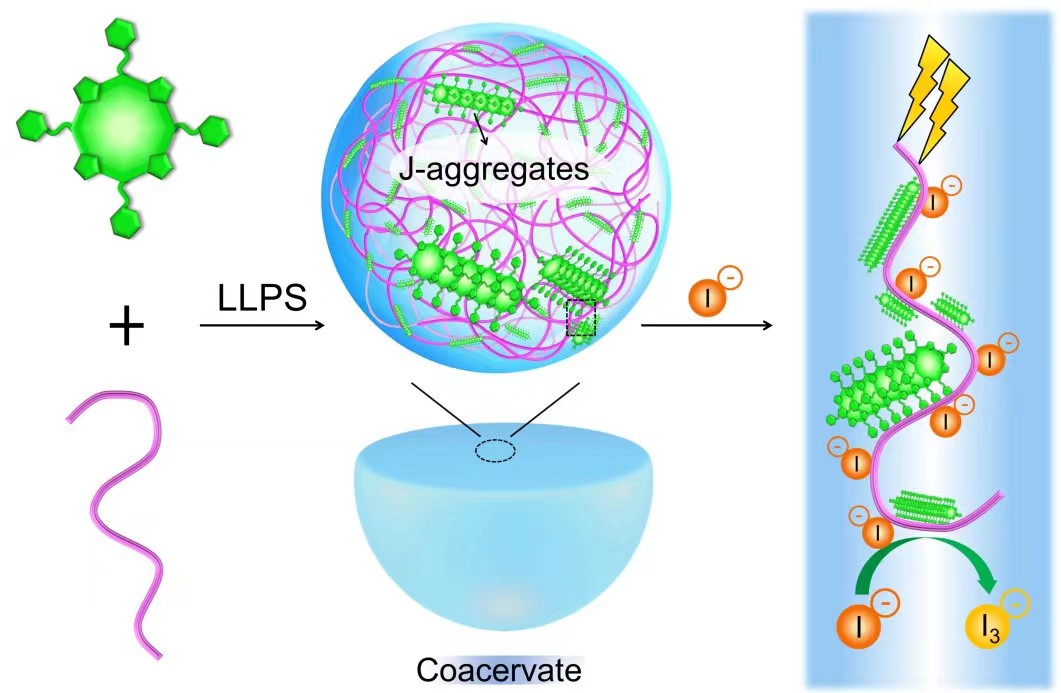Coacervate microdroplets incorporating J-aggregates toward photoactive membraneless protocells
Ziteng Liu,‡ Yanglimin Ji,‡ Wenjing Mu, Xiaodan Liu, Li Yan Huang, Tao Ding and Yan Qiao
Chem. Commun. DOI: 10.1039/d1cc07113k
Photoactive protocells from co-assembly of chromophores and polyelectrolytes into coacervate microdroplets were constructed. The electrostatic attraction between tetrakis(4-sulfonatophenyl) porphine (TPPS) and polycationic diethylaminoethyl-dextran (DEAE-dextran) leads to the formation of cell-sized compartmentalized microdroplets via LLPS, in which the chromophores are self-organized into J-aggregates. The J-aggregates absorb visible light and convert dioxygen into singlet oxygen, which remains active for the oxidation of the electron acceptor iodide. By quantifying the amount of oxidative product triiodide, we demonstrate the efficient catalytic reaction within microdroplets likely due to the colocalization of the chromophore and iodide within the coacervates. The work by Liu et al. highlights the possible strategy to design photoactive biomimetic protocells via cooperative coacervation, rendering a flexible synthetic platform for complex photocatalytic systems.

https://pubs.rsc.org/en/content/articlelanding/2022/CC/D1CC07113K
